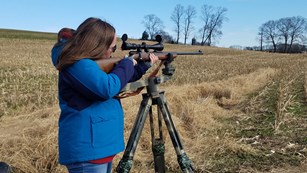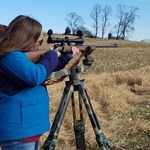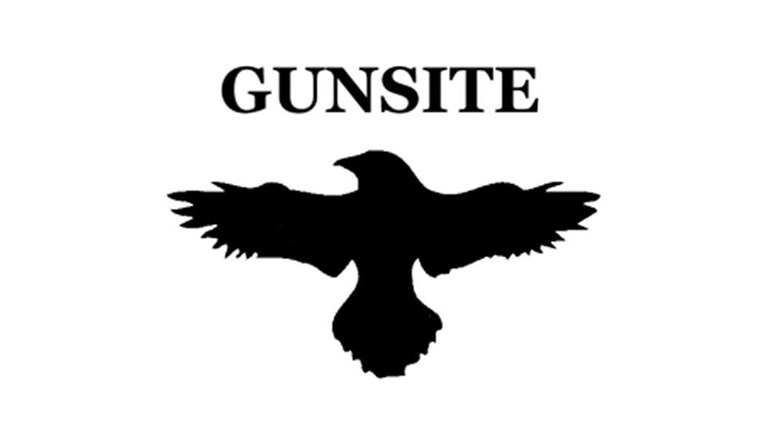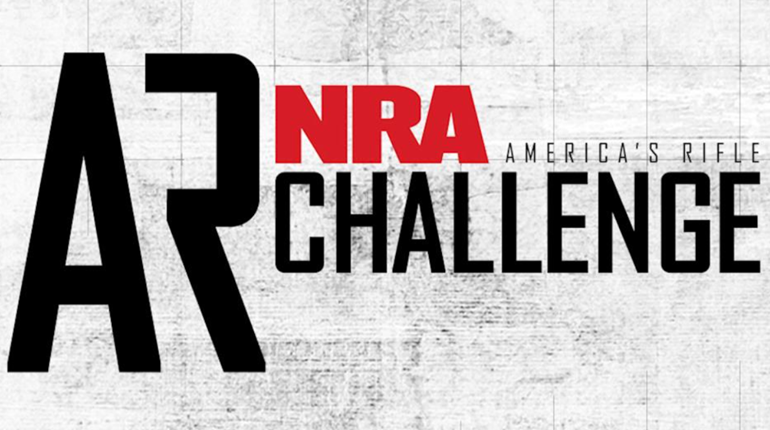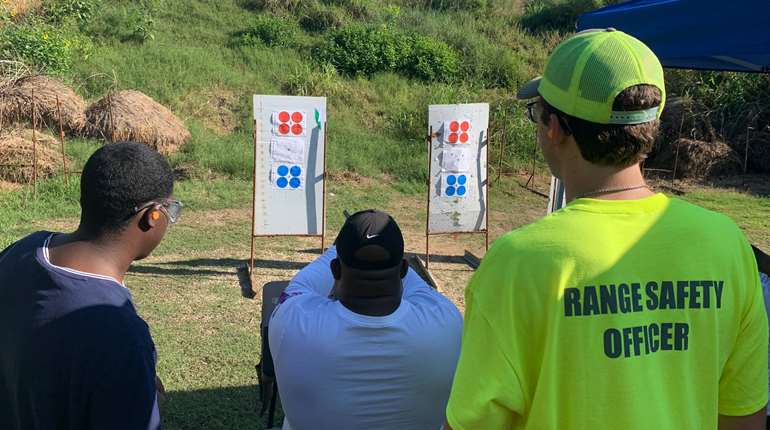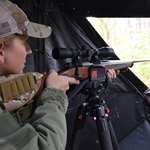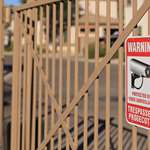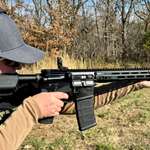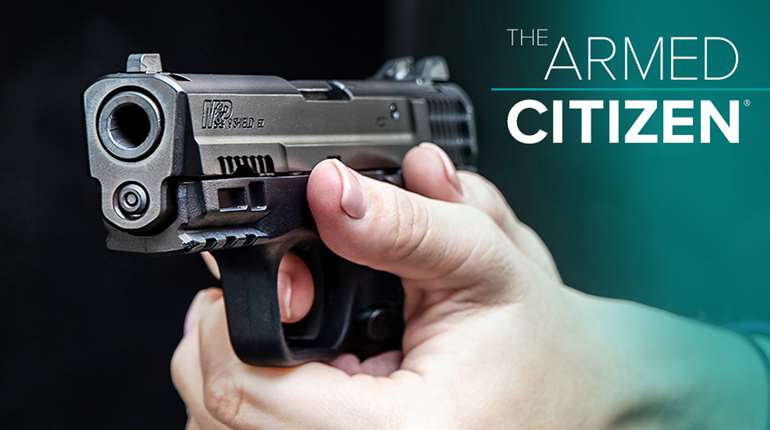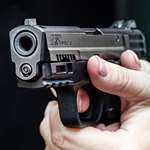
You’re likely well acquainted with the rules of gun safety already, but just in case, let’s review.

The NRA lists three rules:
- Always keep the gun pointed in a safe direction.
- Always keep your finger off the trigger until you’re ready to shoot.
- Always keep the gun unloaded until you’re ready to use it.
We also refer to the (similar) four rules popularized by Gunsite Academy:
- All guns are always loaded.
- Never let your muzzle cover something you’re not willing to destroy.
- Keep your finger off the trigger until your sights are on the target.
- Be sure of your target and what’s beyond it.

In either case, you’ll notice that the rules are somewhat redundant and overlapping. This is very intentional, for a number of reasons. First, as mechanical devices, guns can fail to function as they should. Mechanical safeties can, in rare cases, fail to stop the gun from firing, so you’ll notice that “keep the safety on” is not one of the rules, as it can’t be counted on completely. Second, as humans, we are prone to mistakes. The redundancy in the rules covers us when we have a momentary lapse in judgement and break one of the rules—if you are keeping the gun pointed in a safe direction but somehow let your finger get inside the trigger guard and pull the trigger, no one gets hurt because although you broke one rule, the others kept you safe.
Third, stuff happens. In hunting or in tactical scenarios, things can get chaotic. We might slip or stumble. We might get startled or distracted by something that takes our attention off what we’re doing or causes us to jump. On top of that, humans are prone to a few specific physiological reflexes that cause serious problems if we are playing fast and loose with the gun safety rules.
To be very clear, you should always follow all of the gun safety rules. Do not think that the built-in redundancy allows you to be sloppy or lazy with one rule as long as you follow the others. Follow all of them and your chances of a dangerous negligent event are zero. The redundancy is there to cover you if you have a momentary lapse or if you experience one of these reflex responses.

Startle/Stress Response
When we’re startled, we often exhibit a specific response—a nearly involuntary physical reaction that is the body’s way of preparing us for defense if it should be needed. Not everyone responds the same way, but typically, you might bring your arms up, clench your fists, blink, grasp with your hands, flex your neck muscles and/or increase your heart rate. Do you see how some of those might be really dangerous if you happen to have a loaded gun in your hand? It happens so fast that you won’t be able to stop your body from doing it, but flailing your arms around can lead to accidentally pointing the gun in an unsafe direction. Clenching your fists can turn into a trigger pull if you had absentmindedly let your finger slip into the trigger guard before you were startled.
Even so, if you suffer from the startle response and end up breaking a rule (never let the muzzle cover anything you’re not willing to destroy), if you were observing the rules at the time you were startled, your finger would not be on the trigger and you wouldn’t be caught up in a potential disaster when you startle and clench your fists.
Hand clenching is also a problem with anxiety/stress unrelated to a sudden, startling event. If you are in a high-stress situation, you might find all your muscles—including your fists—tightening up. For this reason, when we tell you to keep your finger off the trigger, we really want you to keep your trigger finger high up on the receiver or the slide. If it’s merely on the outside of the trigger guard, it’s very easy for it to head straight for the trigger under a hand clench response.
Slips and Falls
If you’re moving with a gun, as you might be when hunting or clearing a home (which you should never do unless you really have to, by the way—wait for police if you can), you’re probably concentrating more on what you’re looking for than you are on where you’re going, and slips, falls and stumbles are not uncommon. The problem with stumbling when you’re holding a gun is that the body’s natural response is to ball up the fists, just like with the startle response. Again, this can lead to a trigger pull if you have broken the rule about keeping your finger off the trigger. But because of the redundancy in the four rules, if you’ve been carrying the gun in a safe manner (pointed in a safe direction), or if the gun is not loaded, you can avoid tragedy. Conversely, if you trip and fall and cause your gun to be pointed in an unsafe direction, but you had your finger high on the receiver or you hadn’t chambered a round yet (which is often the case when hunting), the redundancy will have you covered.
Interlimb Interaction
Humans are hard-wired with another weird quirk: When we are under stress, our limbs have a tendency to mirror each other. What one limb or hand does, the other wants to do as well. This is particularly strong with hand clenching—if your left hand closes, the right will tend to close. You could be reaching for a car door handle, clicking on your flashlight, or doing any number of things with your non-shooting hand, but if you’re stressed, when that hand presses something or closes up, your shooting hand is going to do so as well if you’re not careful. If you have your finger on the trigger—which you should only do if you have a target (or a target direction, as you would when clearing a house) and your sights are on it—you can experience an accidental trigger pull due to interlimb interaction.
On the first day of a handgun course, Gunsite Academy shows students a video of a law enforcement officer who was holding a suspect at gunpoint. She had a target, so her finger was on the trigger. When she reached to her shoulder to click her police radio, the clenching motion of her left hand caused her right hand to contract as well, and she pulled the trigger without intending to.
This is interlimb interaction at work. We could discuss whether she was breaking any of the rules or not, but the point is, her body exhibited an involuntary reaction that she had no control over. If you are, say, hunting, and you negligently put your finger on the trigger when you shouldn’t, you are susceptible to interlimb interaction if you use your other hand to pick something up, scratch your nose, pull a tree branch out of your way or any number of other things. You’d better hope you were following the other rules of gun safety so the built-in redundancy will keep you and everyone around you safe.








